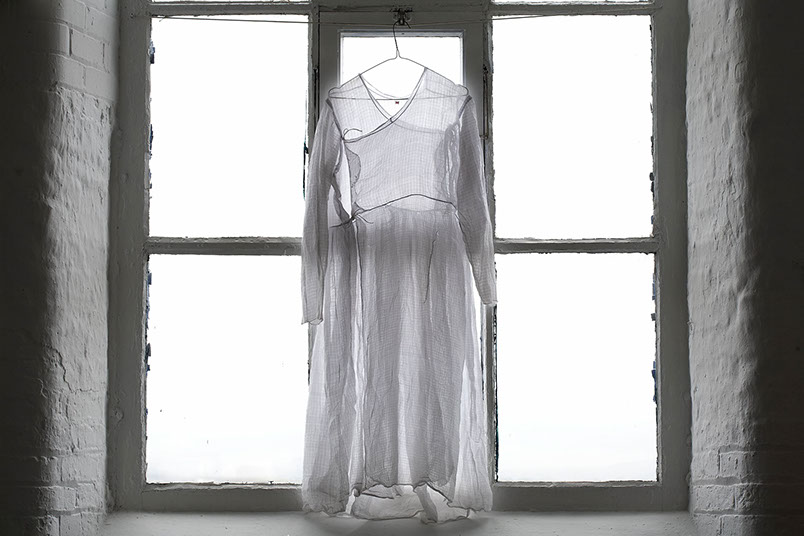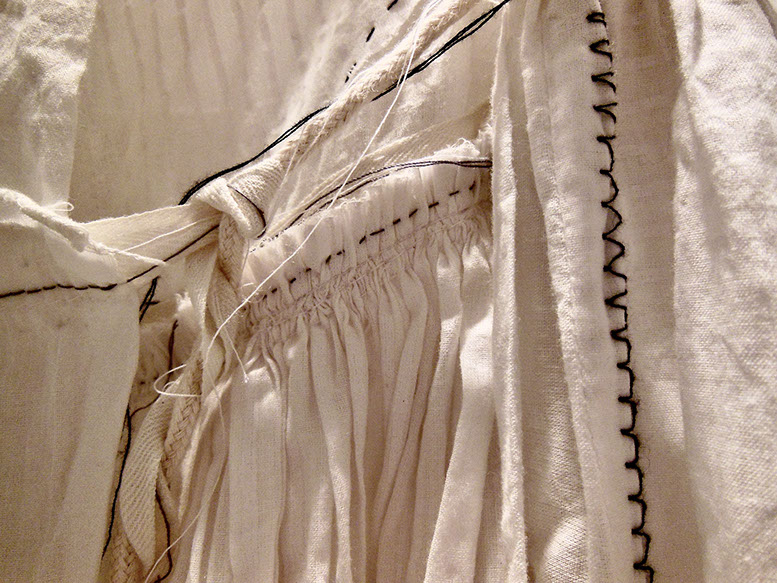





<
>
Revive (exhibition)
The Power of Copying: International Contemporary Design exhibition
Xuzhou Art Gallery, Xuzhou, China
(dates) 2010
This project explored the ways in which it is possible to reference and celebrate the shared histories of Britain and India, with a specific focus on the pattern cutting and construction methodology of Indian menswear, and its application to contemporary womenswear design.
In 2008 Welsh took part in an Arts Council funded project ‘Design Camp’ in Ahmedabad, India. She travelled to the Ribari tribal villages of Kutch, where there is a rich heritage and knowledge of textiles, which provided her with an insight into the textiles of the region. Welsh visited manufacturers and makers in the context of their working environments, in order to formulate an understanding of current manufacturing techniques and practices in Gujarat.
‘Design Camp’ was followed up by further investigation into the pattern cutting methods utilised to construct traditional 18th century Gujarati menswear garments, Jamas and Angarakhas. Additional research into the detailing of traditional Indian costume was undertaken in the Asian Department of the Victoria & Albert Museum, at the Calico Museum of Textiles in Ahmedabad and in the Pahari Miniature Paintings Collection at the Gujarat Museum Ahmedabad.
Welsh followed up this investigation by translating these garments into contemporary womenswear, focusing on fusing the menswear pattern cutting methods developed in India during the 18th century with contemporary British construction methods.
The research culminated in Revive, a dress that Welsh made for The Power of Copying exhibition in at Xuzhou Museum of Art. China. The exhibition focused on creative re-production, developing new ways of learning through “imitation, representation, inheritance, memorization, reproduction, appropriation, transformation, and creation”. The dress referenced a vintage Indian Jama, sourced in Ahmedabad, and was hung alongside the ‘original’. Revive was made from a selection of translucent cotton fabrics, which were printed with a range of traditional Gujarati block prints. The understated white on white patterns combined with layered and pieced ‘sectioning’ re-created the subtleties of an Indian ‘Jama’ garment in a contemporary context.
This project initiated research methods and collaborative research networks that were further developed across several subsequent projects in India.
© Alison Welsh All Rights Reserved